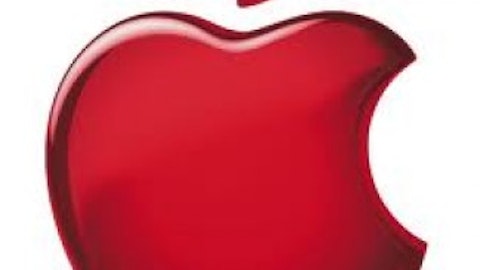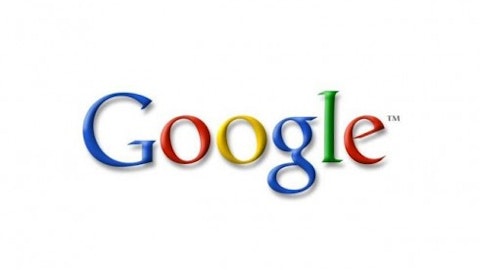
Apple Inc. (NASDAQ:AAPL) posted quarterly revenues of $35.3 billion and net profit of $6.9 billion with an EPS of $7.47 per diluted share. The company sold a record 31.2 million iPhones, one of its star products, compared to 26 million during same quarter the previous year.
As competition heats up for Apple Inc. (NASDAQ:AAPL), the company seems to be struggling in retaining its foothold, especially in the emerging markets. However, the third quarter did exhibit some positive signs for the phone maker. Apple Inc. (NASDAQ:AAPL) surprised the entire market with 20% year-over-year growth in its iPhone shipments.
The exhibited growth was predominantly underpinned by a recent deal with T-Mobile, which enabled Apple Inc. (NASDAQ:AAPL) in grabbing a large volume of first time smart phone buyers. The deal bolstered Apple’s market share earlier this year between March and May. In addition, Apple Inc. (NASDAQ:AAPL) represented more than 30% of T-Mobile’s smartphone sales in spite of being launched late during the quarter.
Apple’s iPad, which contributes approximately 21% to its overall revenue, did exhibit some weakness during the quarter. However, it should be noted, the decline in year-over-year sales is partly due to a different launch phase for Apple’s new iPad. Lat year, Apple launched its third generation iPad during June/July period, in contrast, this year the new iPad is expected to roll out during the holiday season.
What is next for Apple?
The company’s gross margin for the third quarter fell from 42.8% to 36.9% this quarter. This was primarily due to a decline in sales of 14% year-on-year in its Greater China segment, which includes China, Hong Kong and Taiwan. It is noteworthy that decline in sales was underpinned by a gloomy economic environment in China and falling demand in Hong Kong.
However, the company’s iphone sales in India were up by 400%, indicating that India is increasingly driving the smart phone market. As demand for its products in the U.S and Europe reaches saturation, Apple is increasingly looking at emerging markets such as India, China and Hong Kong.
During the last quarter, the international markets contributed 57% to Apple’s overall revenue, which is indicative of times to come. However, when it comes to the iPhone, the company is facing stiff competition in such markets from competitors such as Samsung Electronics Co., Ltd. (KRX:005930), which offers cheaper phones that operate on Google Inc (NASDAQ:GOOG)’s Android platform.
Apple’s strategy of bundling its high end phones with up-front carrier subsidies from telecom providers has worked well in the developed markets; however, it will find very few buyers in the emerging nations, as consumers buy phones separately that are not bundled with data plans from telecom providers.
The company’s business strategy of designing and developing its own operating systems, hardware, application software and services has taken a huge toll on it, as it now lacks constant innovation after the demise of its founder and innovator, Steve Jobs. Although rumors of a cheaper iPhone targeted at emerging markets and a smart watch have been circling around for a while.
The recent U.S patent dispute between Samsung Electronics Co., Ltd. (KRX:005930) and Apple, in which the company was found guilty of infringing on Samsung’s patent by the U.S International Trade Commission, could result in halting of imports of certain older Apple products such as the iPhone 4 and iPad 2 models. This can impact its profitability to a great degree in the future.
It should be noted, most of Apple’s cash is held by foreign subsidiaries, which are subject to U.S. taxation on repatriation. For the fiscal 2012, Apple’s cash stood at around $121.2 billion, which constituted approximately 69% of the company’s total assets.
Even after its substantial share buyback program and dividends, the company is still a cash rich company. However, considering that technology industry is relatively less capital intensive as some other industries investors may ponder if Apple is using its cash resources optimally.
Investors must keep in mind
Google Inc (NASDAQ:GOOG)’s Android directly competes with Apple’s iOS. The company continues to invest in four major areas: Core ads, YouTube, Android and Chrome.
Google Inc (NASDAQ:GOOG) recently unveiled a $35 device, Chromecast, in order to offer Web content for TV screens, which is also compatible with mobile devices running on Google’s Android platform as well as Apple’s iPhones and iPads. Chromecast’s price positioning is lower than Apple TV (priced at $99). I believe the technology is fairly similar in both products; however, Apple TV justifies its cost by offering more features.
Google also released a new version of its Nexus 7 tablet computer, as the company looks to increase Android’s market share and gain a healthy lead over Apple’s iPad. During the last few years, Android has posed tough competition to Apple’s iPhone, as the operating system held a 69% market share during 2012 compared to 19% for iPhone. For tablets, Apple’s market share has hovered at around 39% compared to 79% during 2010, while Android’s share has escalated rapidly to 59% during 2012 from 20% in 2010.
Similarly, Samsung Electronics Co., Ltd. (KRX:005930)’s IT & Mobile communication business is also posing a serious threat to Apple’s iPhone, as it occupied 30.4% market share with a sale of 213 million units during 2012. Samsung’s mobile phones and tablets, running on the Android platform, offers similar apps and other features as Apple’s iPhone; however, it is positioned at a much cheaper price.
This has facilitated it to corner a significant market share in developing markets such as India and China. It becomes essential for Apple to innovate and come out with slightly cheaper offerings of its iPhone in order to offer a tougher competition to Samsung in such markets.
I believe, innovation, whether in the form of in-house R&D or through acquisitions of companies that design innovative products, will be the key to Apple’s success in the future. Long term investors should still hold on to this stock, as the launch of iWatch and Apple TV is expected soon.
The article How Is Apple Positioned in This Tech War? originally appeared on Fool.com and is written by Kiran Gulati.
Kiran Gulati and Equity Dimensions has no position in any stocks mentioned. The Motley Fool recommends Apple and Google. The Motley Fool owns shares of Apple and Google. Kiran is a member of The Motley Fool Blog Network — entries represent the personal opinion of the blogger and are not formally edited.
Copyright © 1995 – 2013 The Motley Fool, LLC. All rights reserved. The Motley Fool has a disclosure policy.





